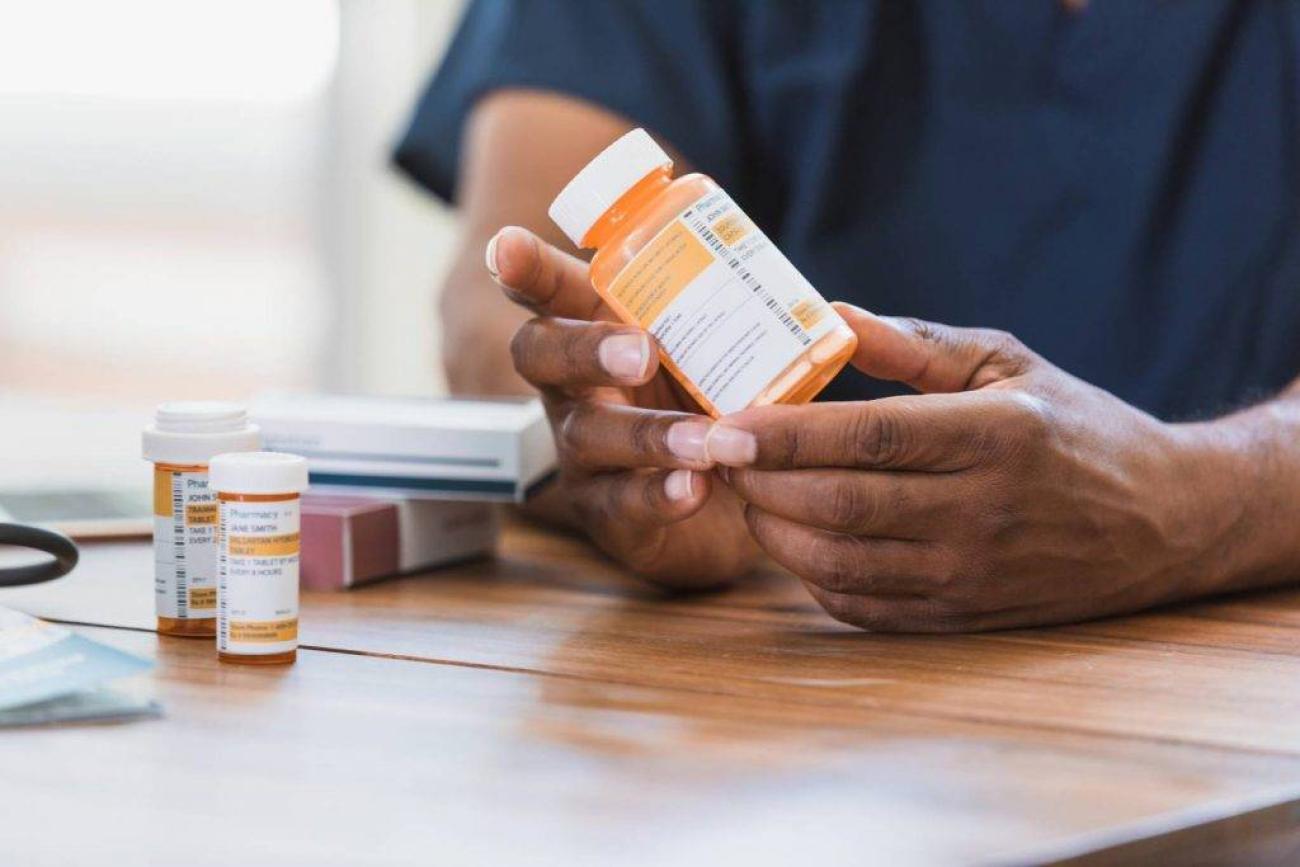“Mama, today is your day to visit the clinic,” reminds Bongezwa Maleyile and Nomzamo Zintoyinto, community healthcare workers in the traditionally Xhosa and rural Nqileni village in the Eastern Cape. Both healthcare workers are visiting the hut of Buziwe Nyingizwayo, 52, who is living with HIV.
The village is a three-hour drive from the main city, Mthatha, with a population of almost 1 000 residents, of which 50% are 15 to 24 years old. Despite its remoteness, the community has successfully eliminated mother-to-child transmission and proudly reports zero new HIV infections.
“This is the work of the Nomakhayas,” says Bongezwa, the head of the Community Healthcare Worker Programme.
The nomakhayas are community healthcare workers who go house-to-house every day to ensure monthly screenings of the residents in the village. They check for diabetes, hypertension and HIV while also providing on-site psycho-social support. With their equipment in their backpacks and creative use of technology, the nomakhayas keep track of which patients need to be visited and the medications to be delivered. In some instances they remain present in the house to ensure that patients take their antiretroviral therapy (ARVs). This is to make certain that people living with HIV, especially those who live alone, are supported and do not default on their treatment.
The work of the nomakhayas falls under the health programme developed and implemented by the Bulungula Incubator (BI), a resident NGO founded in 2004 by David Martin and Rejane Woodroffe. The programme, partly funded by the United States President’s Emergency Plan For AIDS Relief (PEPFAR), implemented its HIV response plan in the area in 2012 after the death of several people in Nqileni and nearby villages from Aids-related illnesses.
“We started with support groups, where we used these groups and dialogues to share information and raise awareness about HIV but there was still a hesitancy to test [for HIV],” says Rejane.
She adds that the breakthrough came in 2013 when the BI used a sports and outreach event to attract residents and encouraged voluntary HIV testing.
“Each person who voluntarily tested for HIV would receive a bag filled with toiletries and necessities. We needed to make it exciting, inviting and engaging so we also used raffles and prizes,” said Rejane.
In a community fraught with poverty and severe socio-economic problems, the “goodie bag” and prizes were a significant incentive. After the successful Know your Status initiative, the BI was able to establish the number of people living with HIV and the next steps in its response: access and adherence to HIV treatment.
The nearest clinic at the time was more than 4km away and although the distance may sound relatively short, Bongezwa says the journey is “harsh”. It involves a one-hour walk to the Xhora River, crossing it in a rickety boat and a climb across two steep hills.
“This can take about three hours,” says Bongezwa. “Sometimes patients would walk this distance, many of them with children, only to find out that the clinic is experiencing a stock-out or [have to] wait in a long queue.”
During the rainy season, getting to the clinic is tougher, because crossing the river is unpredictable or even impossible.
This difficulty inspired the BI to establish the Bulungula Health Point in 2014, which is now also registered as a pick-up point for chronic medication. Two nurses are employed full-time, making healthcare accessible to all. Children are vaccinated, pregnancy tests and other screenings are done and ARVs are couriered by the provincial department of health to the health point, significantly reducing the need to travel long and dangerous distances. The pharmacy at the health point stocks various ARVs, including treatment for the children living with HIV ensuring no one is left behind.
According to the BI, about 20% of the Nqileni population is living with HIV.
“Initially, stigma, discrimination and a lack of information were barriers to treatment,” says Rejane, recalling the death of a BI staff member in 2011 who died of Aids after defaulting on antiretroviral treatment.
Stigma was a barrier to treatment for Buziwe’s husband, Sibongile Nyingizwayo, 46, who was diagnosed with HIV in 2011 and, out of fear, chose not to begin treatment nor disclose his status to Buziwe. In 2012, after falling ill, he finally told her and encouraged her to get tested. The couple have been on treatment since and with the nomakhayas support both Sibongile and Buziwe have achieved viral suppression.
Although this couple is open about their HIV status and treatment, Bongezwa talks about cases where disclosure is not an option for some people living with HIV. “Adherence is more important than sharing your status, so there are times when a person doesn’t want to let their partner or family know that they are HIV positive, and we have to find creative ways of hiding the medication in the house where it is accessible to the person living with HIV but hidden enough to not be discovered.”
The nomakhayas have built a relationship of trust in Nqileni and may often be the only support to those living with HIV.
In South Africa, lack of adherence to HIV treatment remains a problem. Of the 94% of people living with HIV who know their status, 78% are on treatment, according to the national department of health. The treatment gap for children living with HIV is even wider.
According to the latest Human Science Research Council statistics released on Monday in its sixth National HIV Incidence, Prevalence, Behaviour and Communication survey, 90% of people on treatment are showing a significant improvement.
UNAIDS research indicates that many people default on treatment within the first six months with stigma, discrimination and lack of support cited as barriers to treatment especially for vulnerable and priority populations, which include men who have sex with men, sex workers, adolescent girls and young women.
But there are numerous examples of communities across the country actively supporting people living with HIV and with continued empowerment and sustainable funding, it is evident that HIV responses can succeed when we let communities lead.
Zeenat Abdool is the Communication and Advocacy Officer for UNAIDS South Africa.
________________
First published by: The Mail & Guardian








